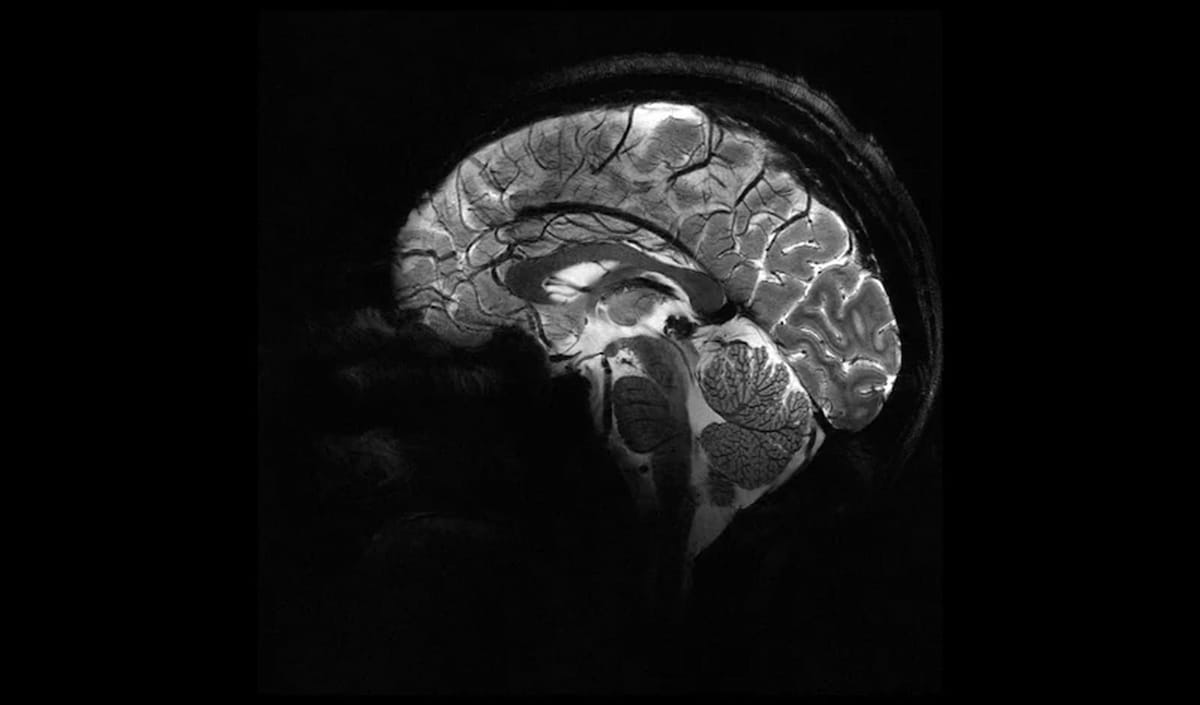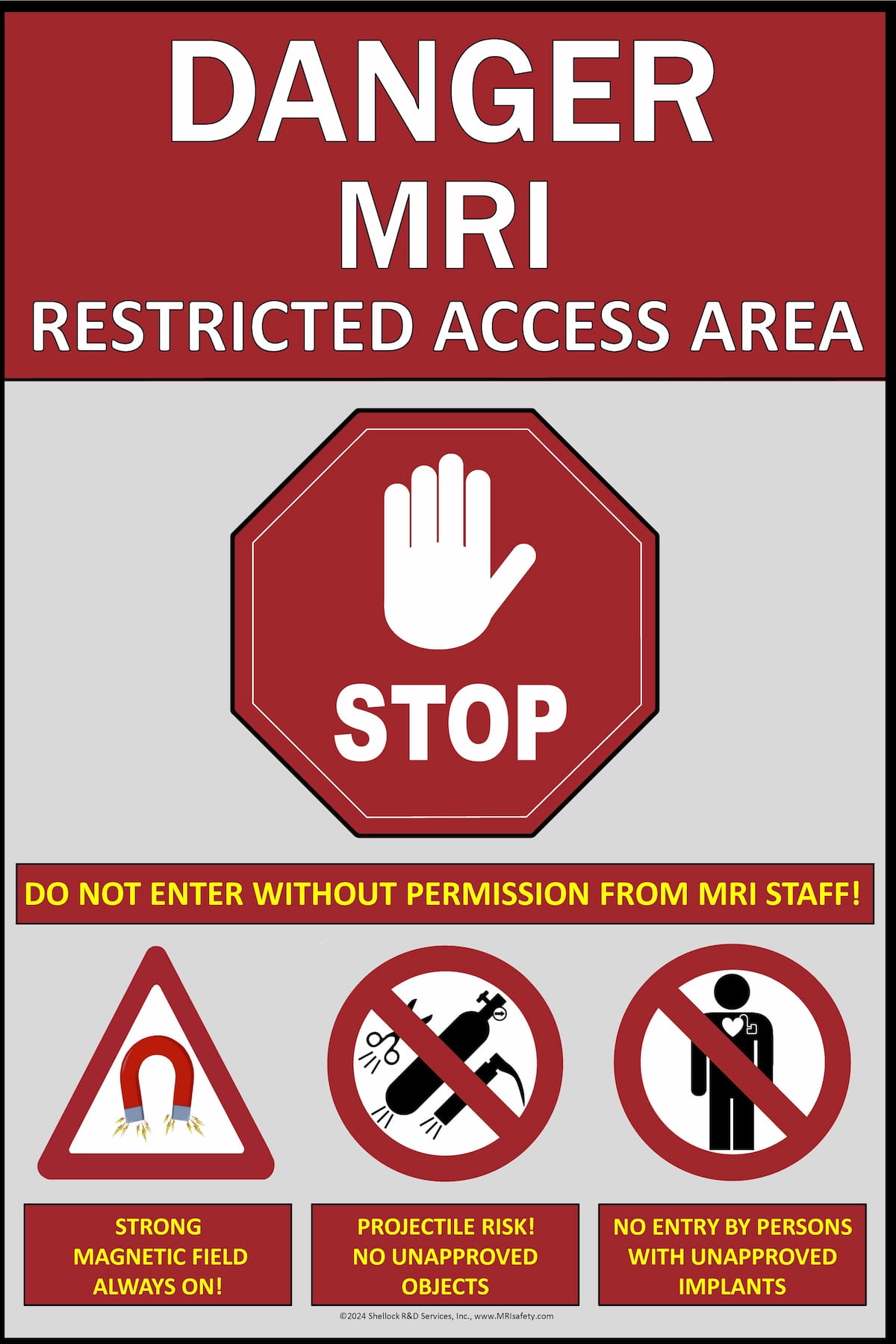Essential Keys to MRI Safety in the Age of Advanced Diagnostics
As ongoing advances continue to redefine and elevate the diagnostic capabilities of MRI, ensuring the safety of patients and operators through effective signage, training and regular safety audits is of paranount importance.
There has been remarkable progress in magnetic resonance imaging (MRI) with the Iseult project of the French Alternative Energies and Atomic Energy Commission (CEA), a project that has led to the creation of the world's most powerful MRI machine with a magnetic field of 11.7 tesla. This innovation allows for unprecedented resolution in human brain imaging, providing new and more precise details on anatomy, neural connections, and brain activity.
The technological impact of the Iseult MRI machine on medical research is significant. The ability to generate highly detailed images supports the early diagnosis and monitoring of neurodegenerative diseases like Alzheimer's disease and Parkinson's disease, improving health care and treatment effectiveness.
Additionally, the detection of weak chemical species is facilitated by the high magnetic field intensity. For example, the Iseult MRI machine enables precise evaluation of the distribution of lithium, used as medication for bipolar disorders in the brain, enhancing the understanding of its therapeutic effectiveness. Similarly, detecting cerebral metabolic molecules such as glucose and glutamate is crucial for characterizing various brain pathologies, including gliomas and neurodegenerative diseases.
The Iseult project, with its high magnetic field intensity MRI machine, represents an unprecedented technological advancement in the field of MRI. The increased spatial resolution and sensitivity for weak chemical species open new possibilities for neurobiological research and medical diagnosis, promising to revolutionize the understanding and treatment of brain diseases. However, adopting such advanced technologies requires even greater attention to safety due to the machine's power and unique characteristics.
Here is the design of a sign with instructions to scan a QR code for safety information and procedures before entering MRI facilities. The QR code directs patients and their companions to useful resources such as MRI safety websites, informational videos, and animations to help all patients stay calm during the exam.

Magnetic resonance imaging involves several unique safety concerns due to the generation and/or presence of three independent magnetic fields, each contributing to specific challenges.
• The static magnetic field (B0) can turn ferromagnetic objects into dangerous projectiles, posing a risk of injury or damage, and can cause malfunctions or displacements of metallic implants or electronic devices in patients.
• The radiofrequency (RF) field (B1) can lead to tissue heating and cause burns, especially with high specific absorption rate (SAR) levels, and can induce currents in metallic implants causing heating or malfunction.
• The gradient field (dB/dt) can induce electric fields in the body, causing peripheral nerve stimulation or muscle contractions, and produces loud noises requiring acoustic protection to prevent hearing damage.
This sagittal view of the brain at 11.7 tesla makes it possible to visualize the cerebellum in very fine detail. (Image courtesy of CEA.)

Common clinical MRI scanners use magnetic fields of 1.5T or 3T while advanced and specialized applications use scanners with fields up to 7T or even 11.7T (Iseult project) that are capable of providing extremely detailed anatomical images. During image acquisition, RF pulses at specific frequencies are applied to disturb proton alignment. When the RF pulse stops, the protons release energy as they return to their equilibrium state, a process known as relaxation. This energy release generates signals that are captured by receiving coils and converted into electrical signals. These signals are subsequently processed with complex algorithms, such as the Fourier Transform (FFT), to generate high-resolution images of internal body structures.
Strict safety protocols are essential, and include the implementation of metal detectors and the verification of MRI compatibility of implanted medical devices. Recent incidents, such as those in Brazil and California where a man died due to the accidental discharge of a gun inside an MRI suite and a nurse suffered severe injuries due to the magnetic attraction of a hospital bed toward an MRI machine, highlight the need for advanced technical measures and improved reporting protocols to prevent such events.
An axial view of the human brain was captured at the same resolution but with different magnetic field strengths. At 3 tesla, the image is less clear with a "grainy" appearance. At 7 tesla, the detail improves, but remains limited with zooming in for a closer look. At 11.7 tesla, the scan provides stronger signals and greater contrasts between tissues, allowing for a more detailed exploration of the brain. (Images courtesy of CEA.)

Principles of Effective Safety Signage
Optimizing signage inside and outside MRI suites with more specific and clear warnings using universally recognized symbols and explicit danger messages can significantly reduce risks. The signage currently provided by MRI system manufacturers often featuring words like "Warning" or "Caution" may not be sufficient or up-to-date. It is necessary to adopt more specific and detailed signage that clearly indicates the real danger. Implementing advanced and clearly defined technical symbols is essential to ensure safety in MRI environments. One should ensure regular updating of these symbols and include those that truly alert those nearby (operators, patients, custodians, transporters, security personnel, firefighters, nurses, anesthetists).
An example of effective signage could be the "Danger MRI" sign, which immediately communicates the zone's danger. A small-sized warning or sticker is particularly useful to highlight the potentially hazardous nature of the MRI environment with the wording: “Danger! This Magnet Is Always On!” In fact, investigations into incidents involving large ferromagnetic objects like oxygen cylinders, chairs, IV poles, and wheelchairs revealed that the hospital staff involved believed that the powerful magnetic field was only activated during the MRI procedure.
Designed by Frank Shellock, Ph.D., this new sign for the MRI system room door will replace all others. Including "Caution" or "Warning" labels, the sign specifies restricted access with MRI staff authorization and includes a stop sign with a raised hand. Note the key safety symbols for strong magnetic field, projectile risk, and no entry for unapproved implants. (Image courtesy of Frank Shellock, Ph.D.)

Adding Braille text to warning signs in MRI facilities can improve safety and accessibility for visually impaired individuals, creating a more inclusive and safe environment for everyone. The visual cortex of blind individuals during Braille reading converts tactile information into meaningful patterns with lexical and semantic properties. Functional neuroimaging (fMRI) studies have shown that the primary visual cortex of early blind individuals is actively involved in Braille reading. This phenomenon highlights brain plasticity, allowing for complex processing of tactile information. Implementing Braille signs in MRI facilities not only underscores the importance of creating accessible and safe environments for all, but also leverages the unique neural capabilities of blind individuals to ensure complete and accurate understanding of safety information.
Including instructions to scan a QR code for additional safety information and procedures before entering MRI facilities may be a good idea. This could direct patients and their companions to useful resources such as MRI safety websites, informational videos, and animations to help children stay calm during the exam. It is crucial that scanner manufacturers pay more attention to the design and implementation of safety signage.
Pertinent Points of Emphasis for Staff Training on MRI Safety
Improving staff training is equally crucial. It is necessary to develop targeted strategies to enhance operator training by implementing uniform safety standards globally. This can include periodic training sessions, emergency simulations, and the use of augmented reality technologies to better prepare staff to handle risky situations. With the increasing complexity of patient populations and the introduction of new medical devices considered safe for MRI, it is essential that technicians, providers, and patients can effectively verify device compatibility during the screening process. The adoption of updated and accessible databases as well as mobile applications providing real-time information on device compatibility are crucial strategies.
An advanced training program must include specific technical components such as the use of metal detection systems and the implementation of emergency protocols. Furthermore, training should cover best practices for managing patients with implantable devices and the correct application of safety guidelines. The global adoption of the American College of Radiology's defined safety zones (Zone I-IV) could significantly improve safety in MRI facilities. These zones help mitigate the risks of projectile incidents and injuries to patients with implantable devices, creating a safer and more controlled environment.
(Editor’s note: For related content, see “MRI Safety: A Closer Look at Key Factors in Managing Radiofrequency Exposure,” “MRI Study: Half-Dose Gadopiclenol Offers Similar Visualization and Safety as Full-Dose Gadobutrol” and “FDA Clears 5T Whole-Body MRI System.”)
Learning from ‘Near Misses’ and Safety Audits
One shiuld also not underestimate the management of "near misses" in the context of MRI. These are events that could have caused damage or incidents, but did not for some reason. Managing "near misses" is crucial for improving safety as this offers the opportunity to identify and correct potential issues before they cause real damage. It is essential that all staff effectively report these near incidents.
Safety audits are an essential component to ensure that safety practices and procedures in an MRI facility are effective and compliant with regulations and industry standards. A safety audit is a systematic and documented process that assesses how well a facility complies with safety regulations, guidelines, and best practices. The main purpose is to identify any gaps or non-compliance in safety practices and suggest improvements. The objectives of safety audits include verifying compliance with laws and regulations, identifying risks, and continuously improving safety practices. The stages of a safety audit include planning, preparation, execution, analysis and reporting, and follow-up.
Final Notes
While advances in MRI continue to revolutionize diagnostic imaging, the increasing power of machines, as demonstrated by the Iseult project, requires greater attention to safety. Implementing advanced technical measures, improving signage, enhancing staff training, verifying device compatibility, and adopting defined safety zones are fundamental steps to improve safety in MRI facilities. Safety audits play a crucial role in this process, ensuring that practices and procedures are effective and compliant with industry standards, thus protecting both patients and staff.
Proactive risk management, continuous training, and strict adherence to safety protocols are essential elements to ensure maximum protection for all users and operators of MRI.
Mr. Scappatura is a radiology technician at the UOC of Radiology of the Grand Metropolitan Hospital in Reggio Calabria, Italy. He is an integral member of the multidisciplinary CAR-T therapy team and the multidisciplinary prostate cancer team.
Recommended Reading
1. MRIsafety.com .
2. Boulant N, Quetter L, Iselut Consortium. Commissioning of the Useult CEA 11.7 T whole-body MRI: current status, gradient-magnet interaction tests and first imaging experience. MAGMA. 2023;36(2):175-189.
3. A world premiere: the living brain imaged with unrivaled clarity thanks to the world’s most powerful MRI machine. CEA. Available at: https://www.cea.fr/english/Pages/News/world-premiere-living-brain-imaged-with-unrivaled-clarity-thanks-to-world-most-powerful-MRI-machine.aspx. Published April 2, 2024. Accessed June 5, 2024.
4. Goolsarran N, Martinez J, Garcia C. Using near-miss events to improve MRI safety in a large academic centre. BMJ Open Qual. 2019 Apr 15;8(2):e00593. eCollection 2019.
5. ACR Committee on MR Safety. ACR Manual on MR Safety. American College of Radiology. Available at: https://www.acr.org/-/media/ACR/Files/Radiology-Safety/MR-Safety/Manual-on-MR-Safety.pdf. Published in 2020. Accessed June 3, 2024.
Could Ultrafast MRI Enhance Detection of Malignant Foci for Breast Cancer?
April 10th 2025In a new study involving over 120 women, nearly two-thirds of whom had a family history of breast cancer, ultrafast MRI findings revealed a 5 percent increase in malignancy risk for each second increase in the difference between lesion and background parenchymal enhancement (BPE) time to enhancement (TTE).
MRI Study Suggests Shape of White Matter Hyperintensities May Be Predictive of Cognitive Decline
April 7th 2025Emerging research demonstrated that cognitive declines in memory, executive function and processing speed domains were associated with irregular shape of periventricular/confluent white matter hyperintensities.
Can Abbreviated MRI Have an Impact in Rectal Cancer Staging?
April 4th 2025Abbreviated MRI demonstrated a 95.3 percent specificity for rectal cancer and provided strong agreement with the full MRI protocol for T staging and detection of extramural venous invasion, according to newly published research.